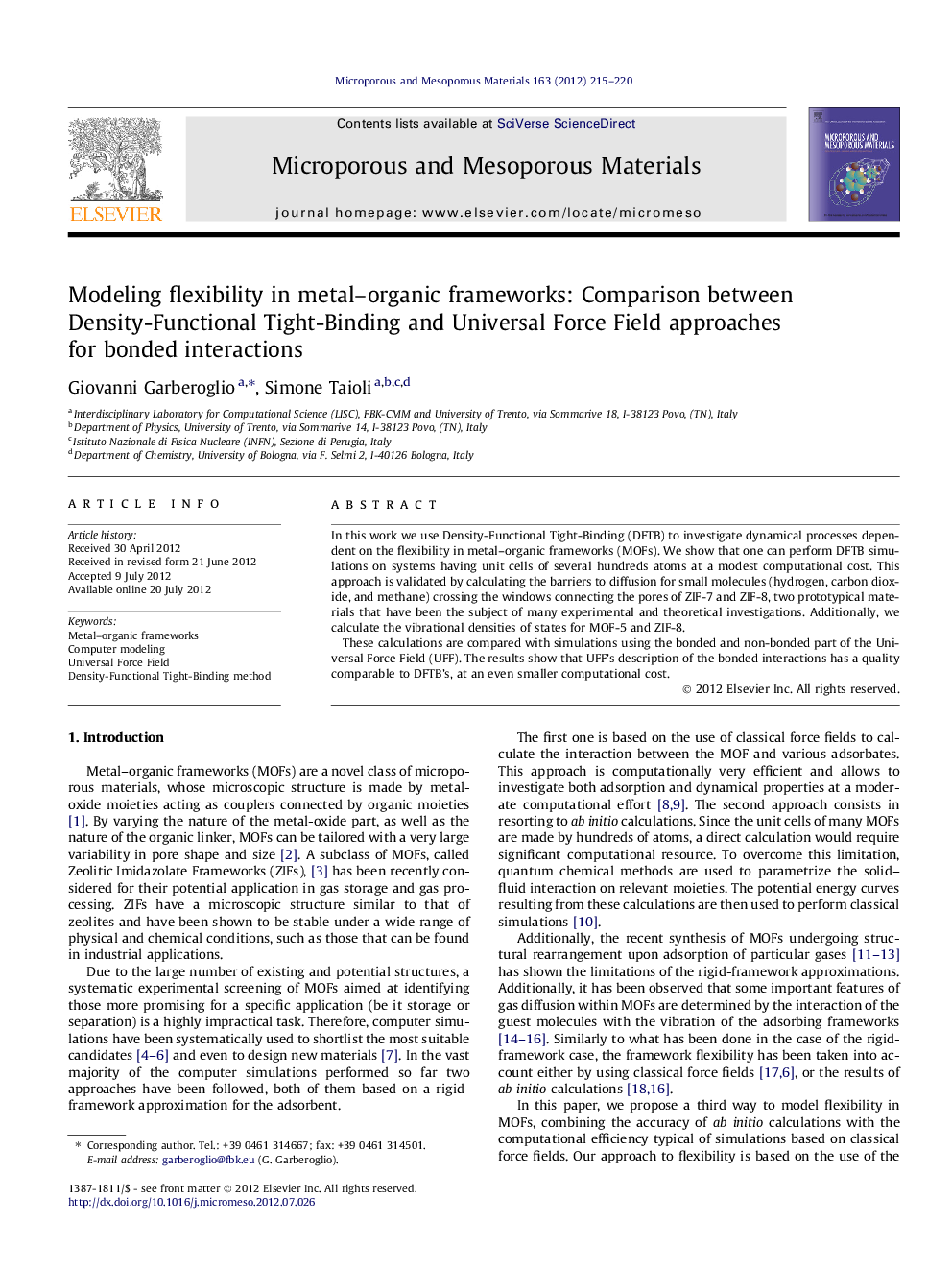| Article ID | Journal | Published Year | Pages | File Type |
|---|---|---|---|---|
| 73993 | Microporous and Mesoporous Materials | 2012 | 6 Pages |
In this work we use Density-Functional Tight-Binding (DFTB) to investigate dynamical processes dependent on the flexibility in metal–organic frameworks (MOFs). We show that one can perform DFTB simulations on systems having unit cells of several hundreds atoms at a modest computational cost. This approach is validated by calculating the barriers to diffusion for small molecules (hydrogen, carbon dioxide, and methane) crossing the windows connecting the pores of ZIF-7 and ZIF-8, two prototypical materials that have been the subject of many experimental and theoretical investigations. Additionally, we calculate the vibrational densities of states for MOF-5 and ZIF-8.These calculations are compared with simulations using the bonded and non-bonded part of the Universal Force Field (UFF). The results show that UFF’s description of the bonded interactions has a quality comparable to DFTB’s, at an even smaller computational cost.
Graphical abstractFigure optionsDownload full-size imageDownload as PowerPoint slideHighlights► We use Density-Functional Tight-Binding to study flexibility in MOFs. ► Barriers to diffusion can be calculated at a modest computational cost. ► DFTB results are compared to those obtained using the Universal Force Field. ► UFF is of comparable quality to DFTB in describing flexibility.
